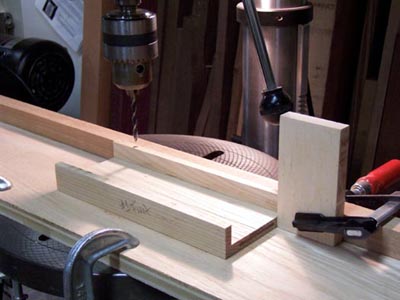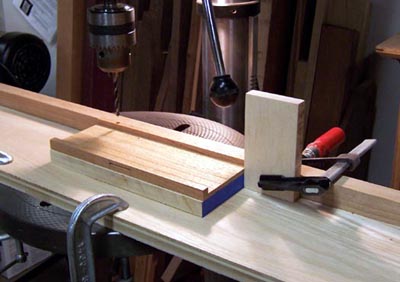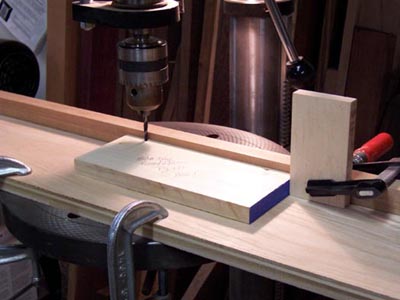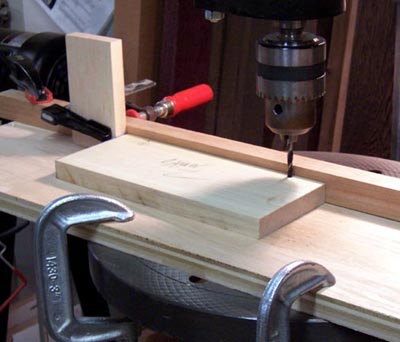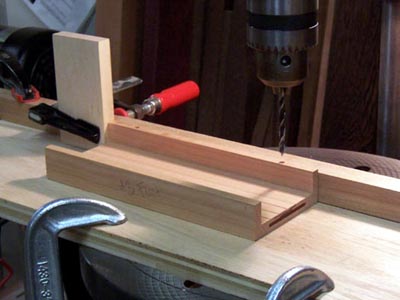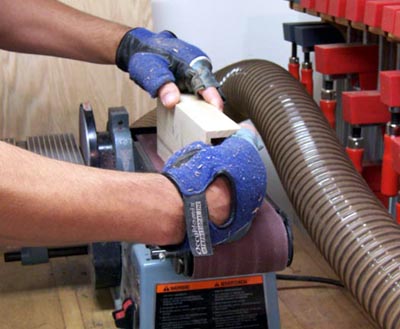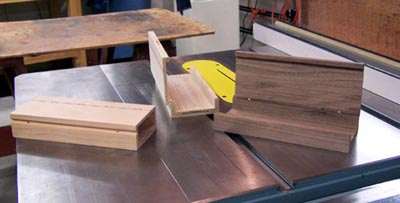|
This Part is Continued from "Building Little Boxes with David Knipfer - Part 1" |
|
|
|
|
|
|
Notes: 11-3-2003 Russell T: On the step where you reset the drill depth, instead of sneaking up on it a second time, could you use the existing hole to reset the depth? Dave: I suppose you could.... if you can figure out a way to get one of the existing holes under the drill bit with the new stop position established at the left hand edge. I've thought about that but could not find a way to do it....... once you swing the spacer shim around and locate the new stop...... then all the holes you already drilled don't line up any more with the drill bit. If you figure out how to do this..... without having to move the carefully placed end stop ..... let me know. Russell T: Would this work? After drilling the through hole and before moving the stop - Take the box bottom, place it back in position and reset the drill depth. Dave: Uhhhhhhmmmmmmm ... Sure!! I'll do that next time Russell..... sounds perfectly good to me. Thanks for the improvement. |
|
|
|
These 5mm barrell hinges are an unobtrusive, simple and inexpensive
way to fix a small box lid and body. I hope you give some a try in your creations. On to Part 3 of the Series. Enjoy Knipfer Forum Notes: Topic: davek, quick 5mm hinge question for you ned86xj, 03-07-2004 01:41 AM I'm going to be making a few boxes in the coming weeks, and I'm planning on using the 5mm Barrel hinges as you have. You show a chamfer cut on the back where the top and the back of the box come together. I've got my hinges on order currently, so I can't experiment on my own just yet. I was wondering if a 1/4 or 3/8 round-over would work as well as the chamfer? The only reason I'm thinking of doing this is to change the design ever so slightly, so it is an 'homage' to your design, with some unique aspects just the same. John and I have a bunch of shows coming up and I'd love to have some boxes to show to the buying public. TIA for your thoughts on the matter. Ned daveknipfer, 03-07-2004 08:02 AM Yes and No. Yes ..... if you size the rounover to allow sufficient clearance then the lids will open. But ...... those hinges swivel a full 180 degrees .... so with a roundover your lids will swing open and then fall backwards ... The chamfer allows for a 'built-in' stop when the two chamfer surfaces meet. If that part bothers you ..... then find some other feature to customize. Knipfer ned86xj, 03-08-2004 12:02 AM Dave, I posted that last night just before bed, and hadn't thought out the built in stop aspect of the box. I visited my spirit stash tonight and picked out some walnut, cherry and maple which will be going into the boxes. I may even trim up some of my prized spalted maple as well. Thanks for your help. Ned Examples of the Actual hinges   This site is maintained by: Good-Lyddon Data Systems Copyright © 2004-2010 Joe Lyddon, WoodWorkStuff.net |
